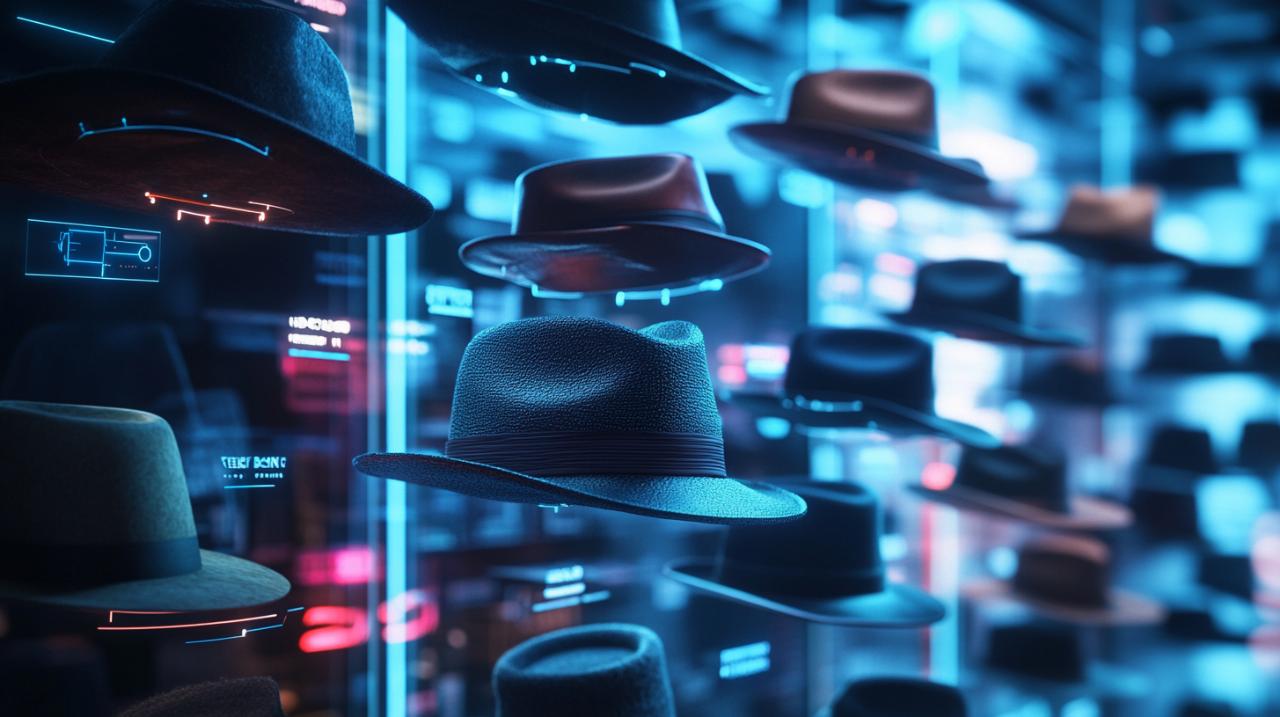The world of headwear has undergone a remarkable transformation in recent years, shifting from its utilitarian roots to become a vibrant statement of personal style and cultural identity. From the timeless elegance of classic felt hats to the edgy appeal of contemporary leather caps, modern headwear reflects both heritage and innovation. This evolution speaks to a broader movement within fashion, where traditional craftsmanship meets cutting-edge design, offering enthusiasts and casual wearers alike an ever-expanding palette of options to express themselves.
The evolution of contemporary headwear styles
Headwear has always been more than a simple accessory. Throughout history, hats have served practical purposes such as protection from the elements, but they have also carried significant symbolic weight, denoting social status, profession, and even religious affiliation. Ancient Egyptians adorned their heads with elaborate designs for both sun protection and decoration, while medieval Europeans used headwear to signal their place in society. The Renaissance brought extravagant wide-brimmed creations favoured by nobility, and the Victorian Era saw men donning bowler or top hats whilst women opted for delicate bonnets. As society progressed into the twentieth century, fedoras, bowlers, and baseball caps gained widespread popularity, each style reflecting the cultural and social currents of its time. Today, the legacy of these historical pieces continues to influence modern designs, blending classic silhouettes with contemporary materials and aesthetics. To discover the latest fashion trends in headwear is to explore a rich tapestry of influences, where the past and present converge in exciting and unexpected ways.
How traditional felt hats shaped today's fashion
Felt hats have a storied history that stretches back thousands of years, with the oldest known example dating to around six hundred years before the Common Era, discovered in Siberia. Felt itself is a fabric created from matted fibres, traditionally wool, and its durability and versatility have made it a staple material for hat-making across centuries. By the Middle Ages, felt hats were common, though the process was not without its dangers; hatters often used mercury in production, leading to neurological problems and giving rise to the phrase mad as a hatter. Despite these hazards, felt hats evolved into some of the most iconic styles in fashion history. The top hat emerged in the late eighteenth century, becoming a symbol of sophistication and wealth among European and North American gentlemen. The bowler hat followed in eighteen forty-nine, offering a more practical yet equally distinguished alternative. The twentieth century saw the rise of the fedora in the nineteen twenties and the trilby in the nineteen sixties, both of which became synonymous with a certain debonair elegance. Figures such as Humphrey Bogart and Winston Churchill famously wore fedoras, cementing the style's place in popular culture. Today, these classic felt designs continue to inspire modern interpretations, with brands like Agnoulita Hats offering vintage-style options that pay homage to the past whilst embracing contemporary tastes. The enduring appeal of felt hats lies in their ability to convey timeless sophistication, making them a perennial favourite among those who appreciate both heritage and style.
The Emergence of Leather Caps in Urban Culture
In contrast to the refined elegance of felt hats, leather caps have carved out a distinct niche within urban fashion, embodying a more rugged and rebellious aesthetic. Leather as a material brings a unique texture and durability that resonates with modern streetwear culture, where individuality and authenticity are prized. The rise of leather caps can be traced to various subcultures and movements, from biker gangs to hip-hop communities, each adopting the style as a badge of identity and defiance. Unlike traditional hats, which often emphasised formality and social standing, leather caps broke away from convention, offering wearers a way to signal their affiliation with countercultural movements and their rejection of mainstream norms. The influence of television and cinema cannot be understated in this regard; shows like Peaky Blinders, set in early twentieth-century England, showcased flat caps worn by working-class characters, leading to a resurgence in popularity and a dramatic increase in sales by as much as fifty per cent. This cultural moment demonstrated how historical styles could be reimagined and embraced by contemporary audiences, particularly when linked to narratives of resilience and rebellion. Leather caps, with their bold appearance and tactile appeal, have become a staple in urban wardrobes, favoured by those who wish to project confidence and edge. Brands have taken note, producing designs that blend classic cap silhouettes with premium leather construction, creating pieces that are as much about craftsmanship as they are about making a statement. The integration of leather into everyday headwear speaks to a broader trend in fashion where materials traditionally associated with luxury or niche markets are democratised and made accessible to a wider audience.
Modern Materials and Craftsmanship in Headwear Design

The evolution of headwear is not solely a matter of style; it is also a story of material innovation and artisanal skill. As fashion moves forward, the tools and techniques used to create hats and caps have advanced significantly, allowing designers to push the boundaries of what is possible whilst maintaining the high standards of quality that discerning customers demand. Traditional craftsmanship remains a cornerstone of hat-making, but it is now complemented by modern technologies that enhance precision, efficiency, and creative expression. This fusion of old and new has opened up exciting possibilities for both established brands and emerging designers, enabling them to cater to diverse tastes and preferences. Whether it is a handmade fedora crafted using methods passed down through generations or a cutting-edge baseball cap produced with the aid of digital machinery, the emphasis on quality and attention to detail remains constant. The result is a vibrant and dynamic market where innovation does not come at the expense of heritage, but rather enriches it, offering consumers an array of choices that reflect their personal style and values.
Premium leather: the new standard for quality caps
Leather has emerged as a defining material in contemporary cap design, prized for its durability, texture, and aesthetic appeal. Unlike conventional fabrics such as wool or cotton, leather offers a distinct visual and tactile experience, lending caps a sense of luxury and permanence. Premium leather, in particular, has become synonymous with quality, as it undergoes rigorous selection and treatment processes to ensure it meets the highest standards. The use of leather in headwear is not a new phenomenon; historically, leather has been employed in various forms of protective and decorative headgear. However, its application in modern caps represents a shift towards elevated casual wear, where everyday items are imbued with a sense of craftsmanship and refinement. Brands such as Agnoulita Hats have embraced this trend, offering custom and vintage-style hats that incorporate leather elements, appealing to customers who value both style and substance. The tactile nature of leather also means that each piece develops a unique patina over time, acquiring character and individuality through wear. This quality resonates with consumers who seek products that tell a story and reflect their own journey. Moreover, leather's natural resilience makes it an ideal choice for caps intended for regular use, as it withstands the rigours of daily life without compromising on appearance. The integration of premium leather into cap design exemplifies a broader movement within fashion towards materials that are not only beautiful but also functional and enduring, challenging the disposable culture that has dominated much of the industry in recent decades.
Innovative techniques transforming classic hat-making
While traditional hat-making techniques continue to be revered for their artistry and precision, the advent of modern technology has revolutionised the industry, enabling artisans and manufacturers to achieve new levels of creativity and efficiency. Three-dimensional printing, digital embroidery machines, and computerised cutting systems have all found their place in contemporary hat production, offering unprecedented opportunities for customisation and experimentation. These innovations do not replace the skill of the craftsperson but rather augment it, allowing for more intricate designs and faster turnaround times without sacrificing quality. For instance, digital embroidery machines can execute complex patterns with remarkable accuracy, bringing to life designs that would be prohibitively time-consuming to produce by hand. Similarly, three-dimensional printing technology has opened up new possibilities for creating unique structural elements and embellishments, pushing the boundaries of what a hat can be. Brands such as Christys' London, with a heritage dating back to seventeen seventy-three, have successfully integrated these modern techniques into their production processes, balancing respect for tradition with a commitment to innovation. The use of computerised cutting machines ensures that materials are used efficiently, reducing waste and enabling precise replication of designs across large production runs. This marriage of old and new is also evident in the work of companies like Kangol, which became synonymous with bucket hats during the nineteen eighties and nineties, and New Era, a leader in baseball caps and snapbacks. These brands demonstrate that innovation need not come at the expense of craftsmanship; rather, it can enhance it, providing consumers with products that are both contemporary and timeless. The impact of technology extends beyond production to the realm of design inspiration, with social media, streetwear culture, and catwalk trends all influencing the direction of modern headwear. This dynamic interplay between tradition and innovation ensures that the world of hats and caps remains vibrant, diverse, and responsive to the evolving tastes of a global audience.







